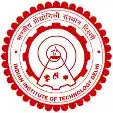Latest Applications Open 2024:
The IIT JAM 2025 syllabus has been officially released online by IIT Delhi, the organizing body for the exam. Candidates can download the syllabus in PDF format to facilitate their preparation. IIT JAM, known as the Joint Admission Test for Masters, is conducted collaboratively by the Indian Institutes of Technology (IITs) and the Indian Institute of Science (IISc).
It serves as a gateway for admission into various postgraduate programs in science and technology disciplines across prestigious institutes in India. The syllabus covers comprehensive topics essential for the exam, aiding candidates in focusing their study efforts effectively.
Students can download the IIT JAM 2025 Syllabus in PDF format. For better preparation, Candidates can also Download other Syllabus in PDF format. The IIT JAM is known as the India Institute of Technology, and the Indian Institute of Science may offer the Joint Admission Test for Masters of Science and Technology.
Click to Download the IIT JAM Mathematical Statistics (MS) Syllabus PDF Here.
Mathematical Statistics
The Mathematical Statistics (MS) Test Paper is structured with a predominant focus on Statistics, accounting for approximately 70% of its content. The remaining 30% is allocated to Mathematics topics. This distribution highlights the significant emphasis placed on Statistics within the test, ensuring a thorough evaluation of statistical concepts and applications alongside foundational mathematical principles.
Latest Applications For Various UG & PG Courses Open 2024
-
- Parul University | Admissions Open for All Courses 2024. Apply Now
- Chandigarh University | Admissions Open for All Courses 2024. Apply Now
- IIAD, Delhi | Admissions Open for All Courses 2024. Apply Now
- GIBS, Bangalore | PGDM Applications Open. Package upto 15.5 LPA. Apply Now
- GNIOT, Greater Noida | Admissions Open for All Courses 2023. Apply Now
- The Design Village | Admissions Open for All Courses 2024. Apply Now
- IMS Ghaziabad UC Campus | Admissions Open for All Courses 2024. Apply Now
- KIIT School of Management | Admissions Open for All Courses 2024. Apply Now
- KSRM | Admissions Open for All Courses 2024. Apply Now
- Jaipuria Institute of Management | Admissions Open for All Courses 2024. Apply Now
- NIIT | Admissions Open for All Courses 2024. Apply Now
- MITWPU | Admissions Open for All Courses 2024. Apply Now
- KL University | Admissions Open for All Courses 2024. Apply Now
- Alliance MBA | Admissions Open for All Courses 2024. Apply Now
- Alliance UG | Admissions Open for All Courses 2024. Apply Now
- GD Goenka | Admissions Open for All Courses 2024. Apply Now
Mathematics
Sequences and Series of real numbers: The study of sequences and series in mathematics encompasses fundamental concepts crucial for understanding their convergence and divergence behaviours. Sequences of real numbers involve the analysis of their convergence towards a limit, distinguishing between Cauchy sequences that converge based on closeness criteria and monotonic sequences whose limits are determined by their increasing or decreasing nature.
Infinite series extends this analysis to sums of infinitely many terms, where convergence or divergence depends on the behaviour of terms, often categorized by tests such as comparison, ratio, root, condensation, and integral tests. Absolute convergence ensures convergence regardless of term order, contrasting with conditional convergence seen in alternating series. Power series, meanwhile, explore the convergence within specific radii, essential for applications in functions and calculus.
Differential Calculus of one and two real variables: The study of functions of one and two real variables involves fundamental concepts in calculus and optimization. For functions of one variable, understanding begins with limits, continuity, and differentiability, exploring properties such as Rolle’s theorem and the mean value theorems of Lagrange. Higher-order derivatives extend this analysis, incorporating Leibniz’s rule and applications of Taylor’s theorem, including Maclaurin series and indeterminate forms addressed by L’Hospital’s rule. The study also delves into maxima, minima, and inflexion points, distinguishing between local and global extrema.
Extending to the functions of two variables, the focus shifts to limits, continuity, and differentiability across multiple dimensions. Partial and total differentiation techniques are introduced, complemented by Leibniz’s rule for successive derivatives. Critical points and their characterization using the Hessian matrix identify maxima, minima, and saddle points, crucial for optimization. Constrained optimization further enhances understanding through techniques like the Lagrange multiplier, enabling solutions within specified constraints.
Integral Calculus: Fundamental theorems of integral calculus (single integral). Lebnitz’s rule and its applications. Differentiation under integral sign. Improper integrals. Beta and Gamma integrals:
properties and relationships between them. Double integrals. Change of order of integration. Transformation of variables. Applications of definite integrals. Arc lengths, areas and volumes.
Matrices and Determinants: Vector spaces with real field. Subspaces and sum of subspaces. Span of a set. Linear dependence and independence. Dimension and basis. Algebra of matrices.
Standard matrices (Symmetric and Skew Symmetric matrices, Hermitian and Skew Hermitian matrices, Orthogonal and Unitary matrices, Idempotent and Nilpotent matrices). Definition, properties and applications of determinants. Evaluation of determinants using transformations. Determinant of the product of matrices. Singular and non-singular matrices and their properties. Trace of a matrix. Adjoint and inverse of a matrix and related properties.
The rank of a matrix, row-rank, column-rank, standard theorems on ranks, the rank of the sum and the product of two matrices. Row reduction and echelon forms. Partitioning of matrices and simple properties. Consistent and inconsistent system of linear equations. Properties of solutions of a system of linear equations. Use of determinants in solution to the system of linear equations. Cramer’s rule. Characteristic roots and Characteristic vectors. Properties of characteristic roots and vectors. Cayley Hamilton theorem.
Statistics
Probability: Random Experiments. Sample Space and Algebra of Events (Event space). Relative frequency and Axiomatic definitions of probability. Properties of probability function. Addition theorem of probability function (inclusion-exclusion principle). Geometric probability. Boole’s and Bonferroni’s inequalities. Conditional probability and Multiplication rule. Theorem of total probability and Bayes’ theorem. Pairwise and mutual independence of events.
Univariate Distributions: Definition of random variables. Cumulative distribution function (c.d.f.) of a random variable. Discrete and Continuous random variables. Probability mass function (p.m.f.) and Probability density function (p.d.f.) of a random variable. Distribution (c.d.f., p.m.f., p.d.f.) of a function of a random variable using transformation of variable and Jacobian method. Mathematical expectations and moments. Mean, Median, Mode, Variance, Standard deviation, Coefficient of variation, Quantiles, Quartiles, Coefficient of Variation, and measures of Skewness and Kurtosis of a probability distribution. Moment generating function (m.g.f.), its properties and uniqueness. Markov and Chebyshev inequalities and their applications.
Standard Univariate Distributions: Degenerate, Bernoulli, Binomial, Negative binomial, Geometric, Poisson, Hypergeometric, Uniform, Exponential, Double exponential, Gamma, Beta (of the first and second type), Normal and Cauchy distributions, their properties, interrelations, and limiting (approximation) cases.
Multivariate Distributions: Definition of random vectors. Joint and marginal c.d.f.s of a random vector. Discrete and continuous type random vectors. Joint and marginal p.m.f., joint and marginal p.d.f. Conditional c.d.f., conditional p.m.f. and conditional p.d.f.. Independence of random variables. Distribution of functions of random vectors using transformation of variables and Jacobian method. Mathematical expectation of functions of random vectors. Joint moments, Covariance and Correlation. Joint moment generating function and its properties. Uniqueness of joint m.g.f. and its applications. Conditional moments, conditional expectations and conditional variance. Additive properties of Binomial, Poisson, Negative Binomial, Gamma and Normal Distributions using their m.g.f.
Standard Multivariate Distributions: Multinomial distribution is a generalization of binomial distribution and its properties (moments, correlation, marginal distributions, additive property). Bivariate normal distribution, its marginal and conditional distributions and related properties.
Limit Theorems: Convergence in probability, convergence in distribution and their interrelations. Weak law of large numbers and Central Limit Theorem (i.i.d. case) and their applications.
Sampling Distributions: Definitions of random sample, parameter and statistic. Sampling distribution of a statistic. Order Statistics: Definition and distribution of the 𝑟𝑡ℎ order statistic (d.f. and p.d.f. for i.i.d. case for continuous distributions). Distribution (c.d.f., p.m.f., p.d.f.) of smallest and largest order statistics (i.i.d. case for discrete as well as continuous distributions). Central Chisquare distribution: Definition and derivation of p.d.f. of central 𝜒2 distribution with 𝑛 degrees of freedom (d.f.) using m.g.f.. Properties of central 𝜒2 distribution, additive property and limiting form of central 𝜒2 distribution. Central Student’s 𝒕-distribution: Definition and derivation of p.d.f. of Central Student’s 𝑡-distribution with 𝑛 d.f., Properties and limiting form of central 𝑡-distribution. Snedecor’s Central 𝑭-distribution: Definition and derivation of p.d.f. of snedecor’s Central 𝐹-distribution with (𝑚, 𝑛) d.f.. Properties of Central 𝐹-distribution, distribution of the reciprocal of 𝐹-distribution. Relationship between 𝑡, 𝐹 and 𝜒2 distributions.
Estimation: Unbiasedness. Sufficiency of a statistic. Factorization theorem. Complete statistic. Consistency and relative efficiency of estimators. Uniformly Minimum variance unbiased
estimator (UMVUE). Rao-Blackwell and Lehmann-Scheffe theorems and their applications. Cramer-Rao inequality and UMVUEs. Methods of Estimation: Method of moments, method of maximum likelihood, invariance of maximum likelihood estimators. Least squares estimation and its applications in simple linear regression models. Confidence intervals and confidence coefficient. Confidence intervals for the parameters of univariate normal, two independent normal, and exponential distributions.
Latest Applications For Various UG & PG Courses Open 2024
-
- Parul University | Admissions Open for All Courses 2024. Apply Now
- Chandigarh University | Admissions Open for All Courses 2024. Apply Now
- IIAD, Delhi | Admissions Open for All Courses 2024. Apply Now
- GIBS, Bangalore | PGDM Applications Open. Package upto 15.5 LPA. Apply Now
- GNIOT, Greater Noida | Admissions Open for All Courses 2023. Apply Now
- The Design Village | Admissions Open for All Courses 2024. Apply Now
- IMS Ghaziabad UC Campus | Admissions Open for All Courses 2024. Apply Now
- KIIT School of Management | Admissions Open for All Courses 2024. Apply Now
- KSRM | Admissions Open for All Courses 2024. Apply Now
- Jaipuria Institute of Management | Admissions Open for All Courses 2024. Apply Now
- NIIT | Admissions Open for All Courses 2024. Apply Now
- MITWPU | Admissions Open for All Courses 2024. Apply Now
- KL University | Admissions Open for All Courses 2024. Apply Now
- Alliance MBA | Admissions Open for All Courses 2024. Apply Now
- Alliance UG | Admissions Open for All Courses 2024. Apply Now
- GD Goenka | Admissions Open for All Courses 2024. Apply Now
Testing of Hypotheses: Null and alternative hypotheses (simple and composite), Type-I and Type-II errors. Critical region. Level of significance, size and power of a test, p-value. Most
powerful critical regions and most powerful (MP) tests. Uniformly most powerful (UMP) tests. Neyman Pearson Lemma (without proof) and its applications to the construction of MP and UMP tests for the parameter of single parameter parametric families. Likelihood ratio tests for parameters of univariate normal distribution.
IIT JAM Mathematics Statics (MS) Syllabus 2025 FAQs
What is a random variable?
A random variable is a variable whose possible values are outcomes of a random phenomenon. It assigns numerical values to each outcome of a probability experiment.
What is the difference between a discrete and a continuous random variable?
A discrete random variable takes on a countable number of distinct values, while a continuous random variable can take any value within a range or interval.
What is the Central Limit Theorem (CLT)?
The Central Limit Theorem states that the distribution of the sum (or average) of a large number of independent and identically distributed random variables, when properly normalized, tends to a normal distribution regardless of the underlying distribution of the individual variables.
What is the difference between convergence in probability and convergence in distribution?
Convergence in probability means that as the sample size increases, the probability that a sequence of random variables converges to a certain limit increases. Convergence in distribution, on the other hand, means that the sequence of random variables converges to a certain limit, but the sample size does not.
What are moments in the context of probability distributions?
Moments of a probability distribution are numerical measures that quantify the shape, centre, and spread of the distribution. The first moment is the mean, the second moment is the variance, and higher-order moments provide additional insights into the distribution’s characteristics.
What is the difference between skewness and kurtosis?
Skewness measures the asymmetry of a probability distribution. A distribution is positively skewed if the tail on the right side is longer or fatter than the left side and vice versa for negatively skewed distributions. Kurtosis measures the “tailedness” of the distribution – how much data is in the tails.
What is an improper integral in probability theory?
An improper integral in probability theory arises when the limits of integration are infinite or when the integrand does not decay properly as the limits approach infinity.
What is the Markov inequality?
The Markov inequality provides an upper bound on the probability that a non-negative random variable is greater than or equal to a constant. It is useful for deriving bounds on probabilities when detailed information about the distribution is limited.
What are the applications of moment-generating functions (m.g.f.)?
Moment-generating functions provide a way to uniquely determine the probability distribution of a random variable. They also simplify the computation of moments and facilitate the derivation of properties such as means, variances, and higher-order moments.
How is differentiation under the integral sign used in probability theory?
Differentiation under the integral sign allows for the differentiation of functions defined as integrals themselves. This technique is particularly useful in probability theory for simplifying the computation of expected values and moments of random variables.
If you have any other queries regarding IIT JAM Mathematics Statics Syllabus 2025, you can ask us by commenting below.

As a dedicated Biology Science graduate, I’m passionate about sharing the latest updates in national and state entrance exams through my blog. I aim to keep aspiring students informed about exam trends, important dates, and changes in syllabi. With a keen interest in education, I strive to offer valuable insights for students navigating the competitive landscape of entrance examinations and admission tests. Stay updated with me.

